This is a tutorial on one way to make a nine patch block. The Nine Patch is one of the most basic blocks used in quilting and it’s very helpful to be able to make it well. It is the starting point for many other designs. This will help you perfect the Nine Patch and therefore help with other blocks as well. It’s my first tutorial so bear with me!
The nine patch begins with 9 equally sized square blocks. Typically this is done with 4 blocks of one color and 5 blocks of another, but color choice is at the discretion of the quilter. Different patterns call for different arrangements. For my example I will be using 4 blocks of one color and 5 different, but coordinating colors.
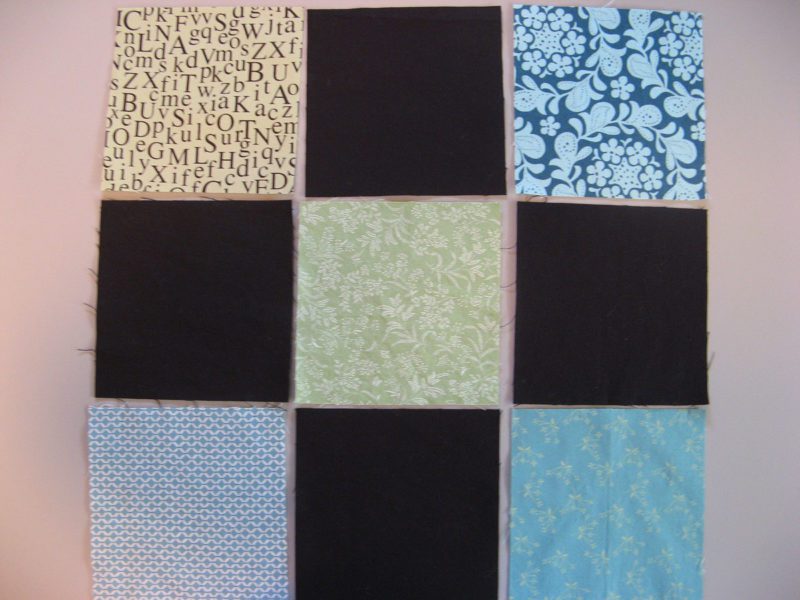

Take the middle fabrics and lay them right sides together to top of the left fabrics, aligning the right edge.
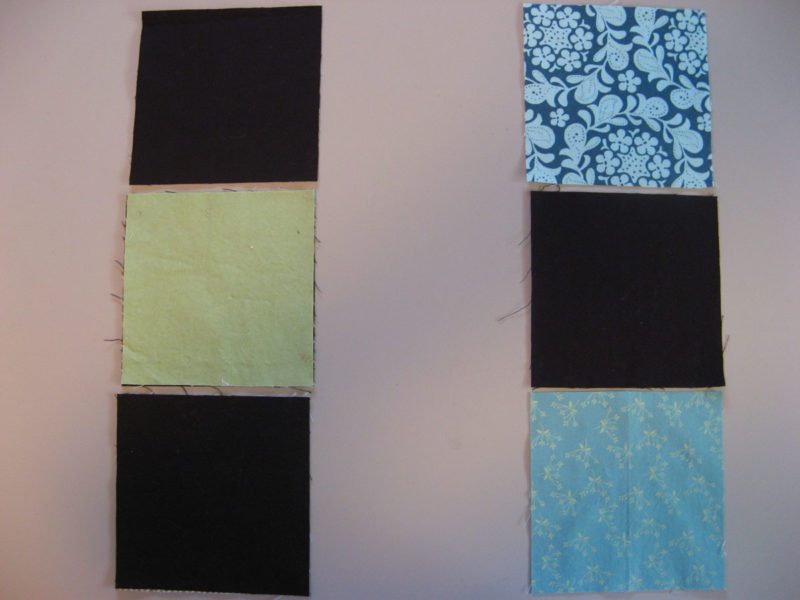

Chain stitch these three blocks together. In other words, don’t sew the blocks together individually, keep a thread running throughout all the blocks. To do this, simply don’t cut the thread between each block but let it run for a few stitches before sewing the next block together. You will see the thread connecting the blocks together which will help keep the correct placement and not lose any blocks in the process.
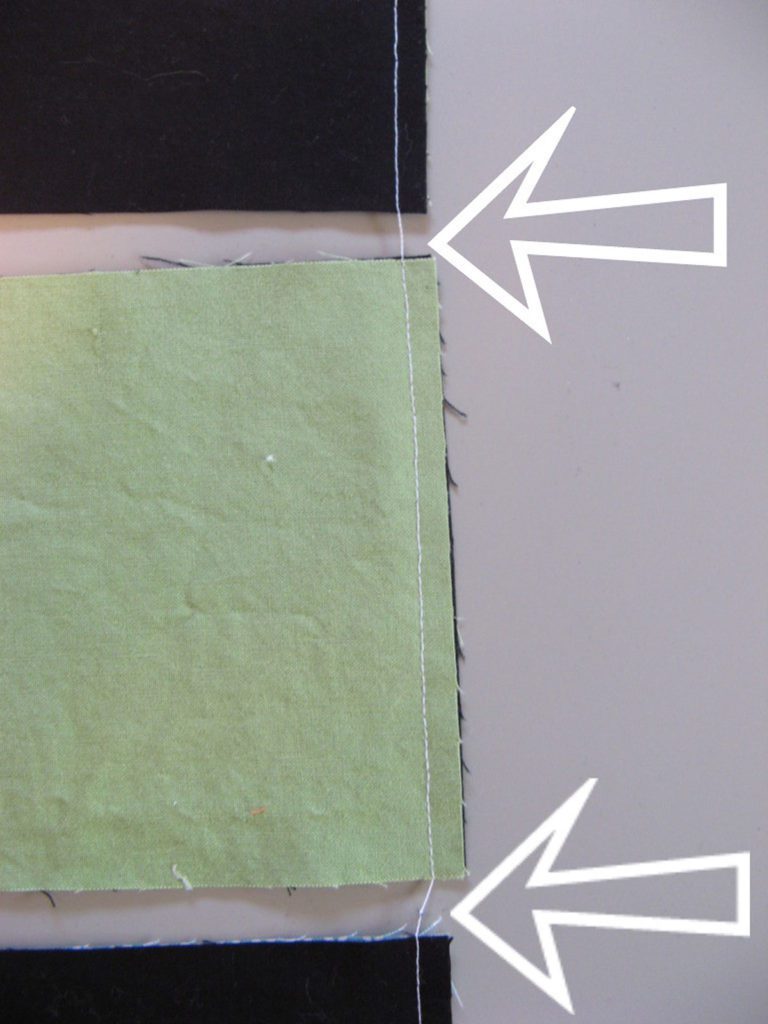

Take your stitched blocks and lay them out next to the remaining right side blocks, opening the blocks as you do so. Confirm that your blocks are still in the original order that you wanted them to be.
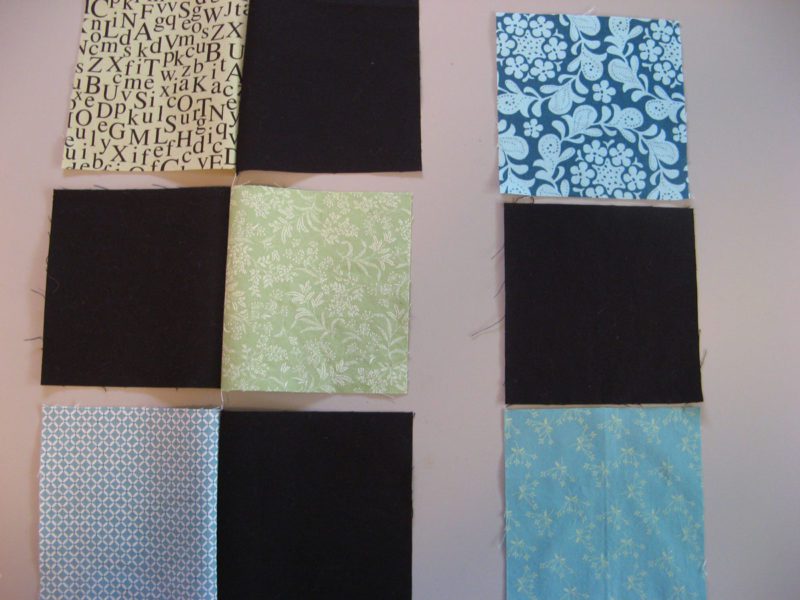

Now take the right side blocks and lay them down, right sides together, on top of the middle blocks.
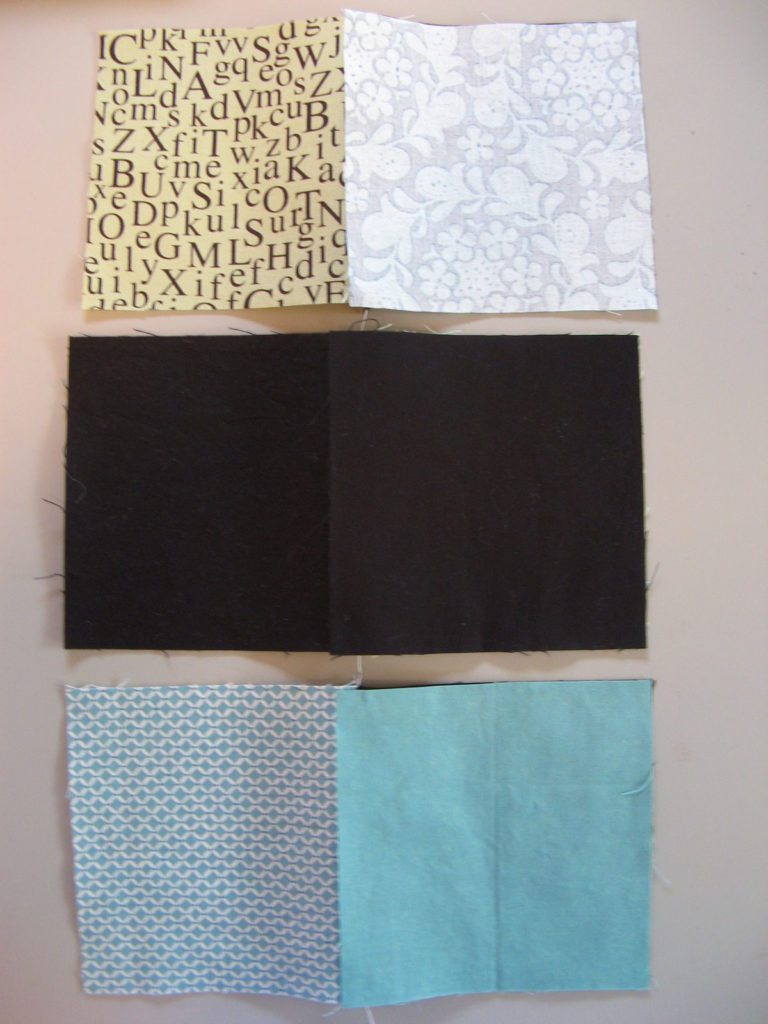

Just as before, chain stitch these blocks together as well. Now you will have three rows connected by a few lengths of thread.
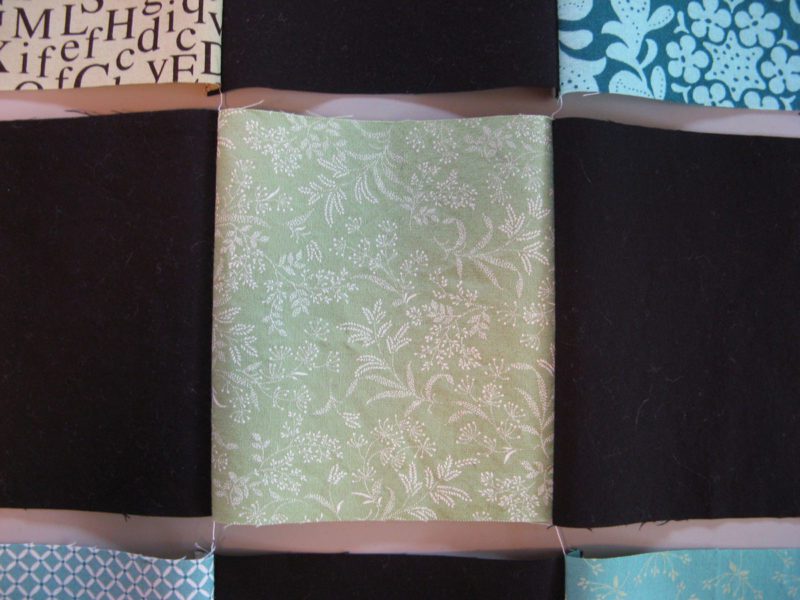

Next is an important step: pressing the seams. You need to press the seams of each row in an alternating fashion. Here I have pressed the seams of the 1st and 3rd rows away from the center block, and I have pressed the 2nd/middle row seams toward the center block of its row. Pressing the seams in this manner will help us get tight neat seams as we continue to join the block together and allow us to swirl the seams later.
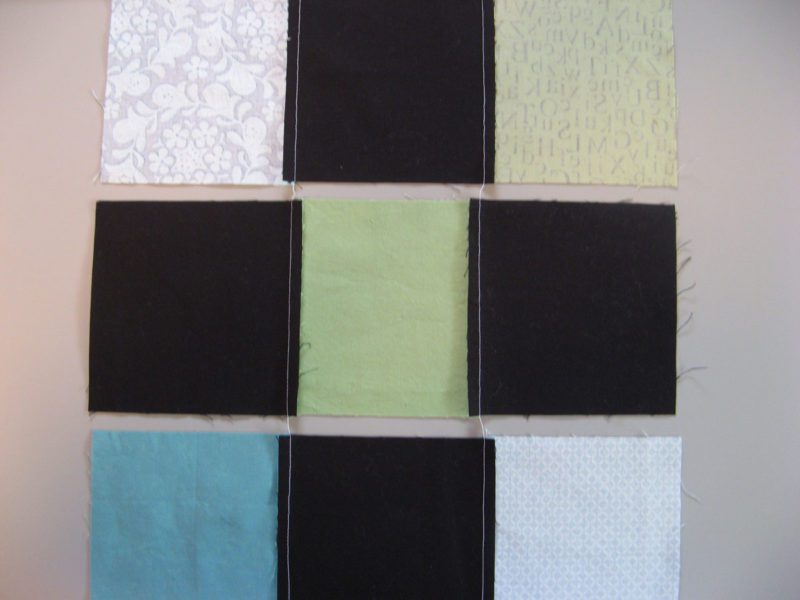

a close up view of the pressed seams.
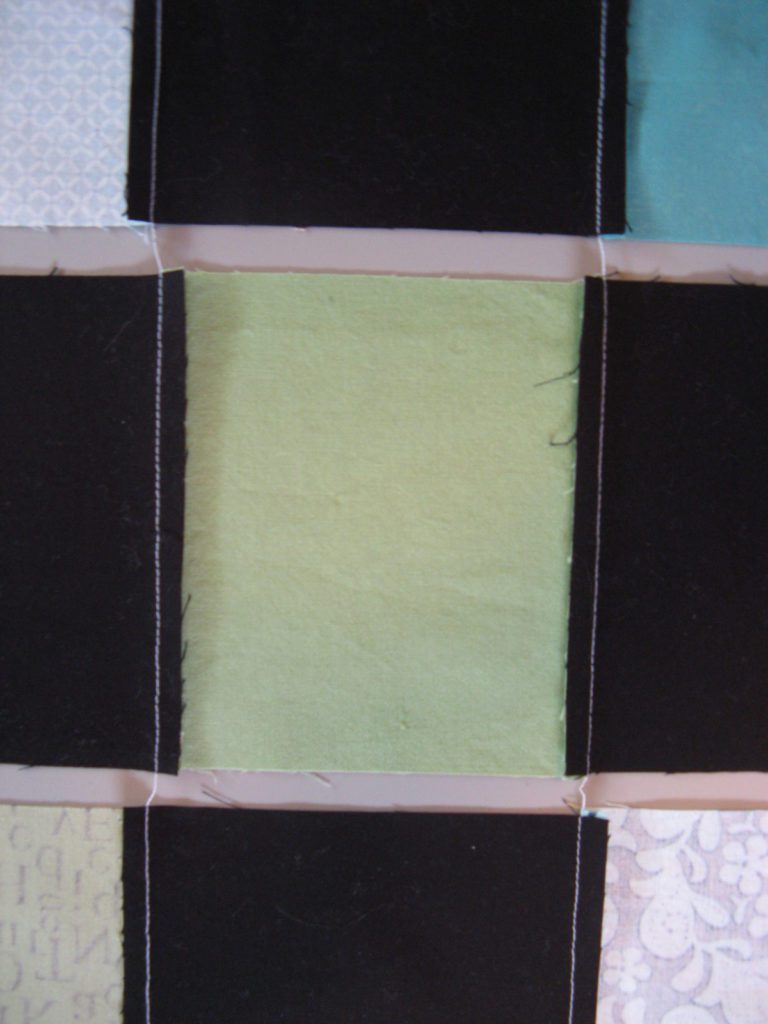

Now will begin to join the rows together, paying careful attention to where the seams meet on each row. Because we have pressed the seams in opposite directions for the alternating rows, you are now able to “nest” the seams together. This means that they can butt up to one another without creating extra bulk in the seam allowance.
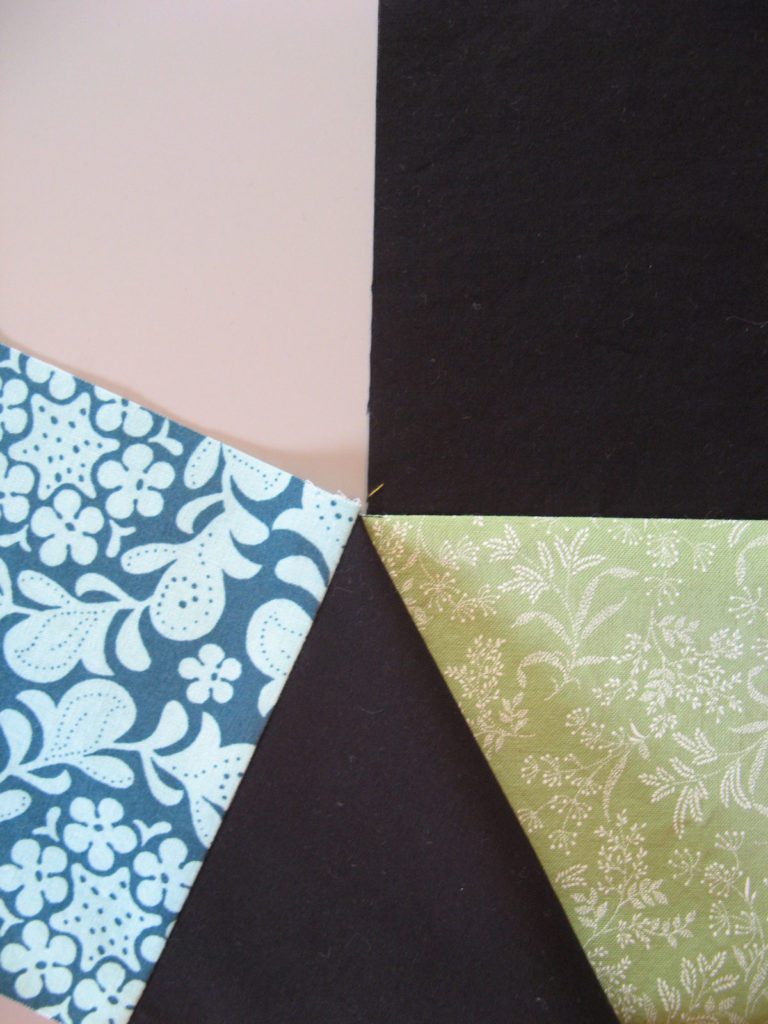

Here is a detail of two seams being nested together. Notice the the little thread connecting the two rows is still there. Make sure that this stays in the seam allowance on the wrong side of the block.
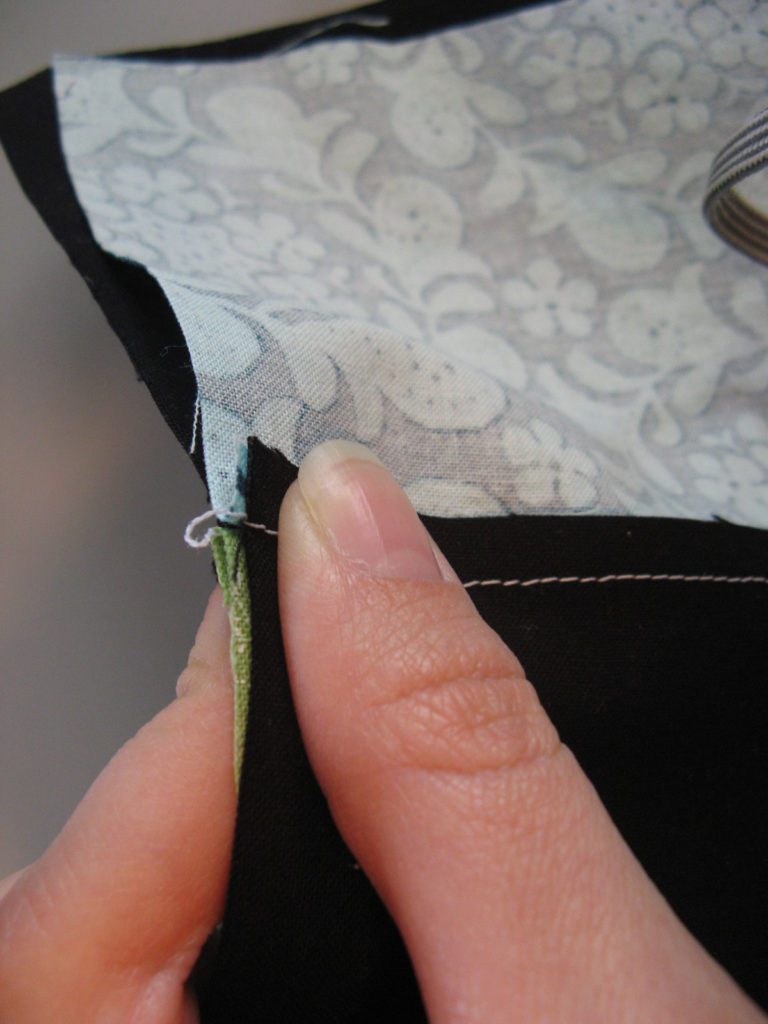

To sew each row together perfectly, I definitely break out the pins at this point. Not only does help square up your block by pinning the ends of the rows together, but it also helps keep those seams nested together. I use about 4 – 6 pins per row, but you can use as few or many as you need. I find it helpful to pin the seam allowance that will be going against the direction of sewing so that it does not get flipped.
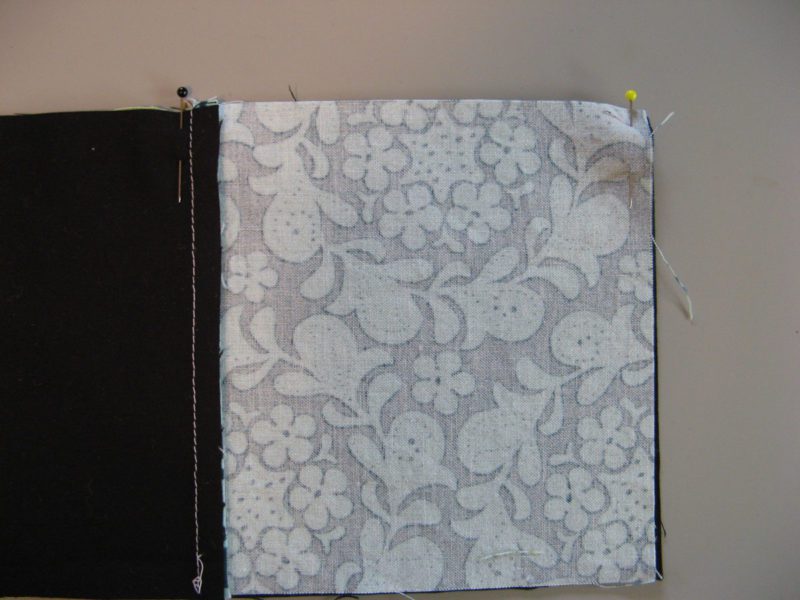

You can now sew the block together. From the back your block should look like this. Remember that you have pressed your horizontal seams flat but you have yet to press the vertical seams…we have a few steps to do before we do that. Here’s where the fun begins!
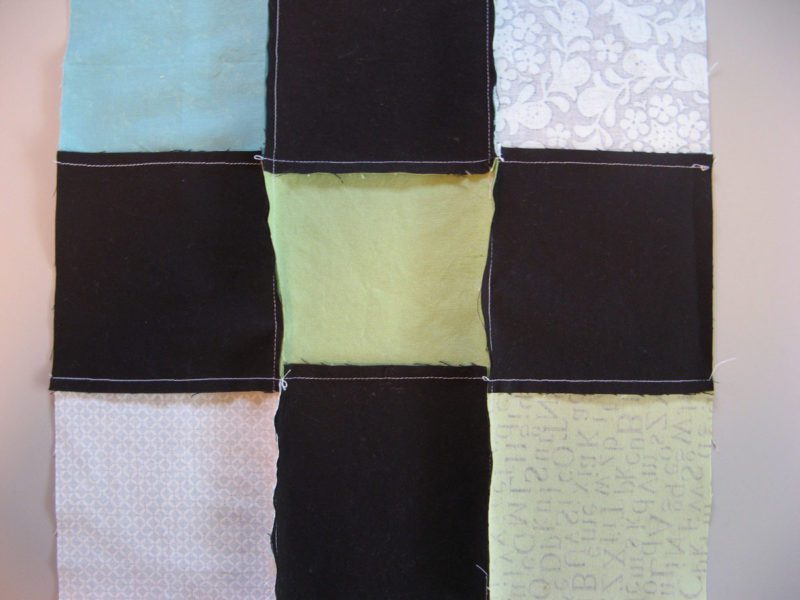

Swirling the seams: The following treatment will be done to each of the four intersections where four blocks meet together. It will allow us to take the bulk out of the seam allowance and create a block that will lay flatter and be easier to quilt in the long run.
So, take one of the intersections and find that string that connected the blocks together earlier from chain stitching. Remember that your horizontal seams are pressed flat but your vertical seams should sort of sticking up.
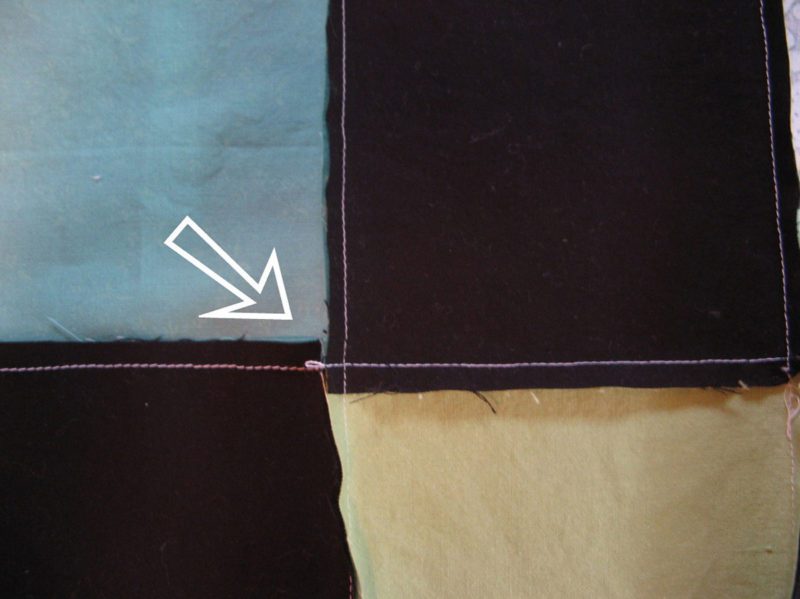

Take a small pair of scissors and snip this string apart.
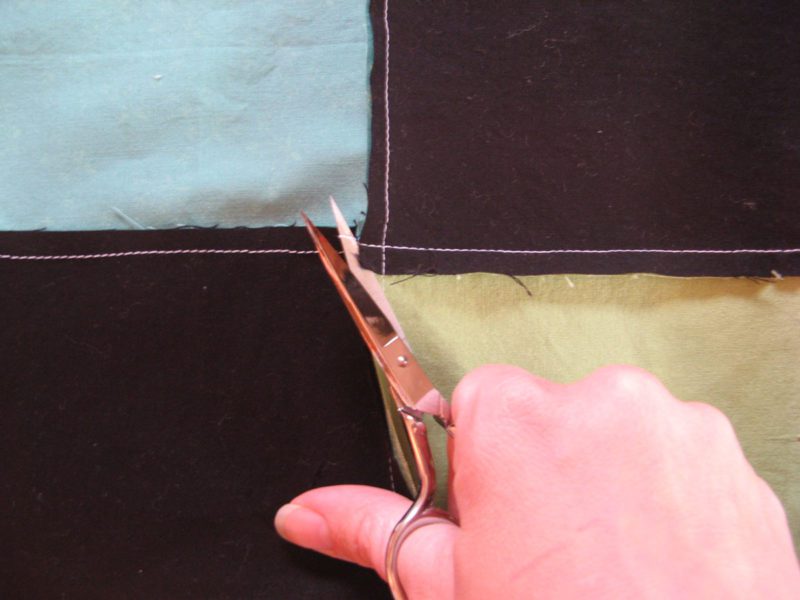

Next, take your seam ripper and take out approximately three stitches from the seam allowance of the vertical seams (the ones that are “sticking up”). You want to go up to but not past the seams from the horizontal seam allowance.
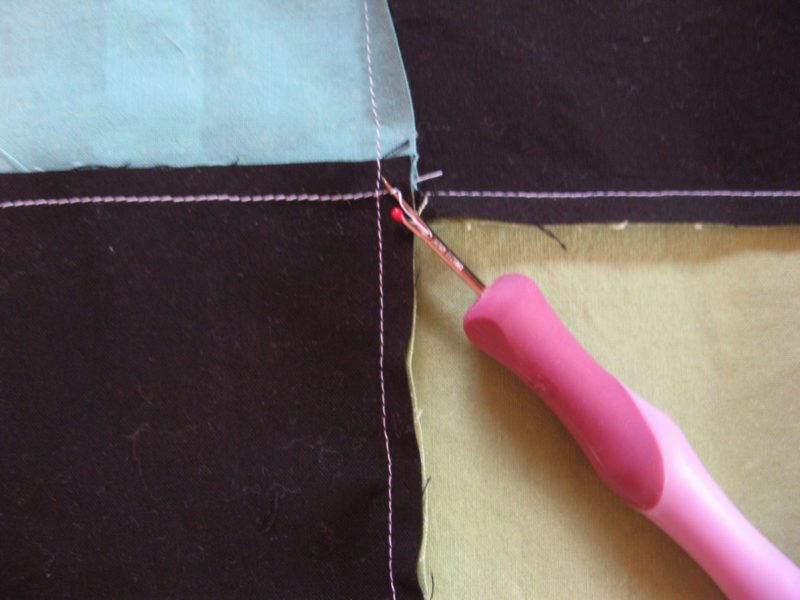

When you are finished, the seam should now look like this. Vertical seams are still sticking up and the horizontal ones are flat, but a few key stitches have been removed.
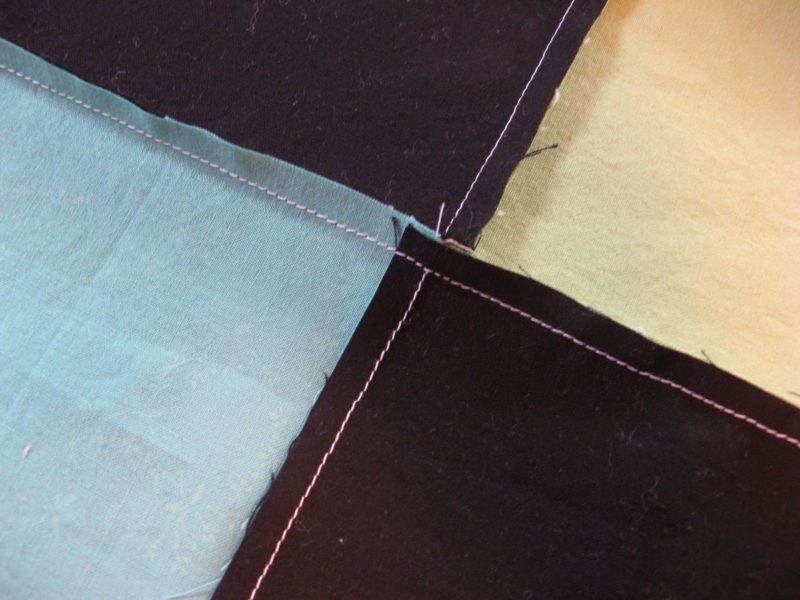

Now comes the tricky part. It can difficult to see sometimes, but I find with practice this step becomes easier. You want to separate the pieces at the intersection so that you are able to press the seam flat. I look for the fabrics with folds from the seam allowance and pull those apart. Try it a few times and you’ll see what I mean!
You will find that when you separate the seams here that one vertical seam will go in one direction and the other in the opposite direction.
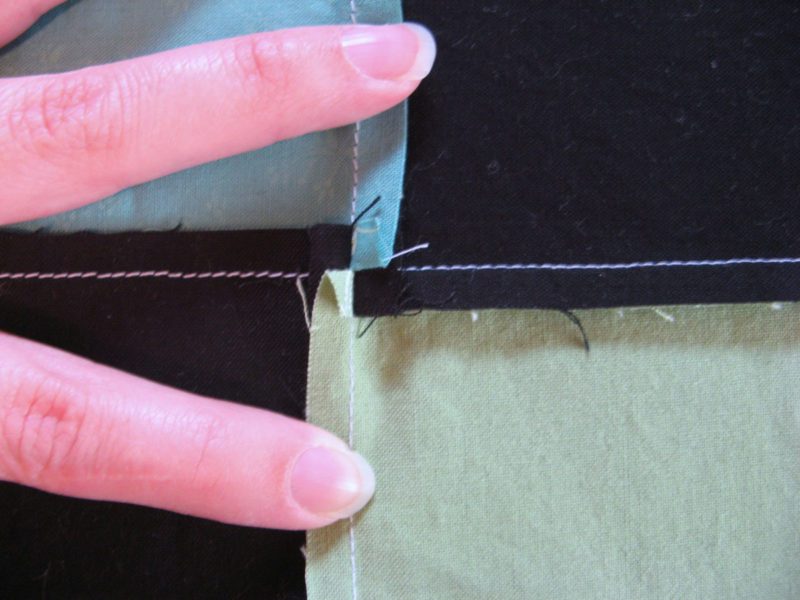

Finger press this seam flat. You should end up with a little four square. You might be able to see better in this picture that the aqua fabric and the green fabric have the little fold in them that I was talking about in the previous step. That is what I pull in opposite directions.
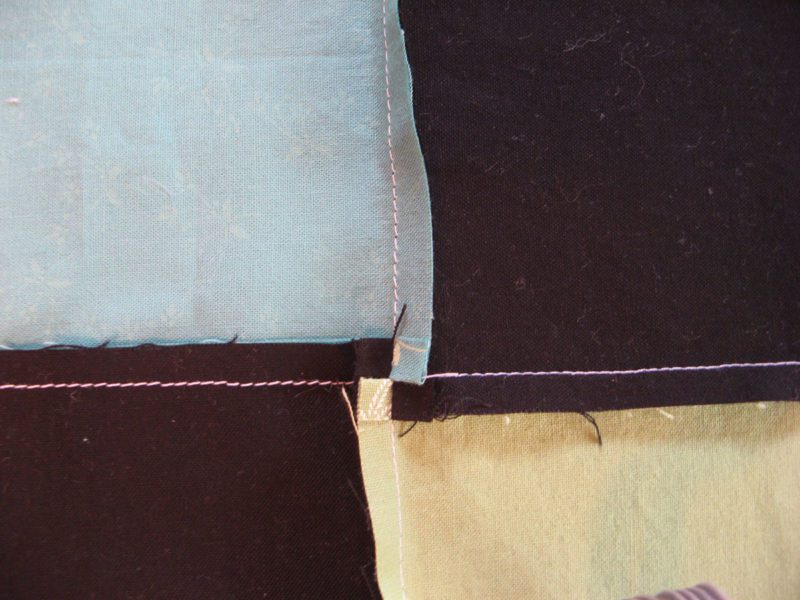

Now press the seams flat with an iron. You will be able to press one completely flat, but the other may only be press partially until you swirl all the seams on the block.
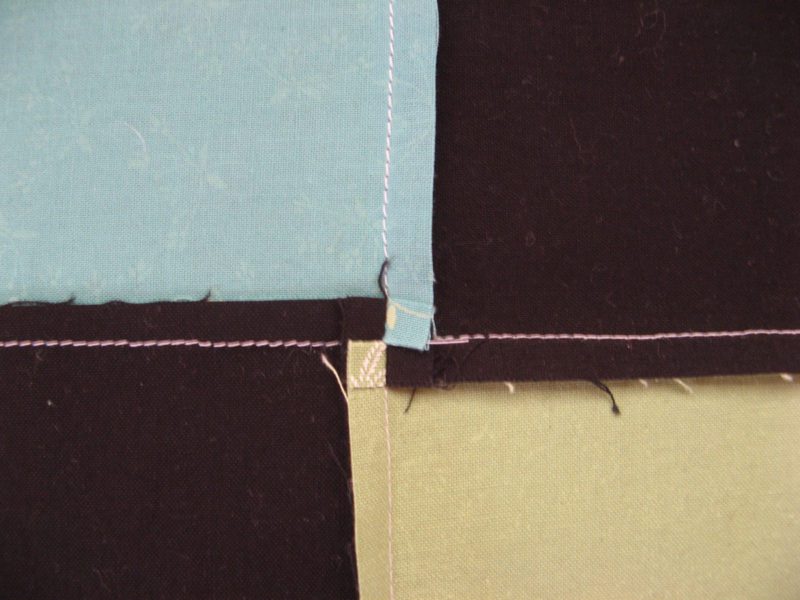

Repeat this process on the three other seams until all four have been swirled. You will find that the seams help you know which way they will swirl as you complete more of them on the block.
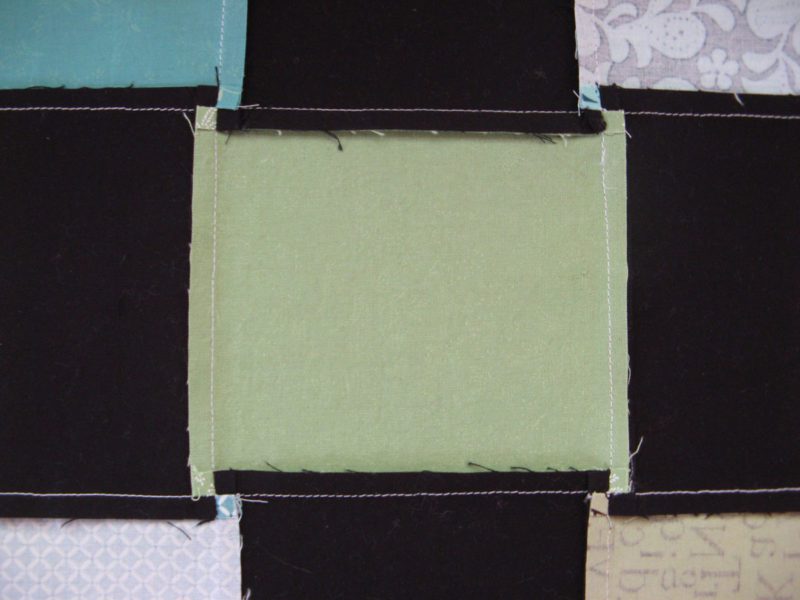

Turn the block over, press again. You will see that you have a nine patch block with well matched points and no bulk in the seams!
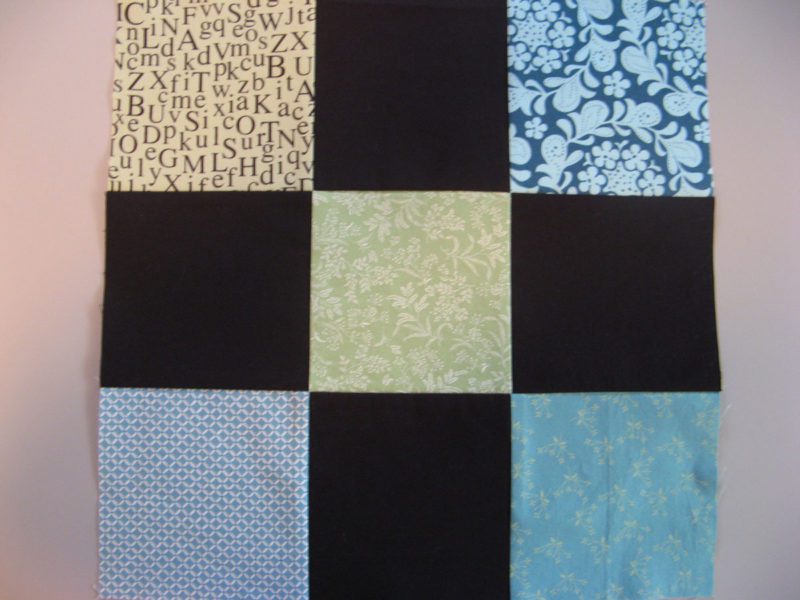

Now you are ready to go! Make a whole quilt of nine patches, or you can use the nine patch as the starting point for many more quilt blocks like a tossed nine patch, a four square nine patch, a sliced nine patch and many more.
Note that this technique is even more helpful when matching more than four seams at a point. I find it particularly useful in any kaleidescope block or pieced circular block. Try it and see how much it helps!
The tutorial looks great! I learned something new! Thanks! Amy-pretty in pink bee
oh.my.goodness Angela! I had no idea there was such a thing as "swirled" seams! Way to go to add that perfectly nice finishing touch on your nine patch. also, that was a really good point that when you chain stitch the pieces of the block together, you won't be able to accidently mix up the placement. Love that!
i saw swirled seams on something you had done for a bee i'm in with you, and i had wondered how you accomplished that. thanks for sharing!
I had no idea about swirled seams! very, very helpful and such a clear tutorial! Thanks x
so happy that the tutorial looks clear to everyone and that it's actually helpful! Yeah! I love anything that helps make the quilt come together more perfectly. To be honest I don't always do this, but I'm always happier when I do!
A very nice tutorial! I am joining you in the modern swap and just stopped by to say hi!
I have never done swirled seams on a 9 patch. The tute is bloody genius!!! 🙂
woohoo! I'll take a bloody genius compliment any day!
Thank you for this tute! I've been making a disappearing nine-patch and wondering how I'm supposed to press all those seams- now I know!
Thank you for the great tutorial! Not having that bulk at the end is great!
Do you ever have any problems with these seam intersection opening up over the long haul/lots of love/abuse/washing? I notice you use a much smaller stitch length than I normally do, too….how many stitches per inch do you think this is?
Wow! My head is spinning but in a good way.
Thanks so much. I am just learning the whole quilting thing and this is so very helpful!
Arrived here via Pink Chalk blog….this
is a really great tutorial !
Off to check out your blog…glad to find you !
Thank you so much, this is AMAZING! and has saved my patchwork 🙂 So much better now I'm doing it this way, just a tiny bit worried the seams might start to come apart though… Do you think they will?
Merci Beaucoup, great help, my first quilt, with triangle, next is square!!! Thank's again! Lili
Merci beaucoup! Great help, simple, good pictures, thanks! Lili
Merci Beaucoup, great help, my first quilt, with triangle, next is square!!! Thank's again! Lili
Great tutorial, I've saved it to Pinterest so I'll be able to find it the next time I need it. Thank you!
I just discovered this tutorial and I am SO excited to give it a go! My first quilting attempt was all lumps and bumps.
Thank you so much for this clever solution and excellent tutorial!!